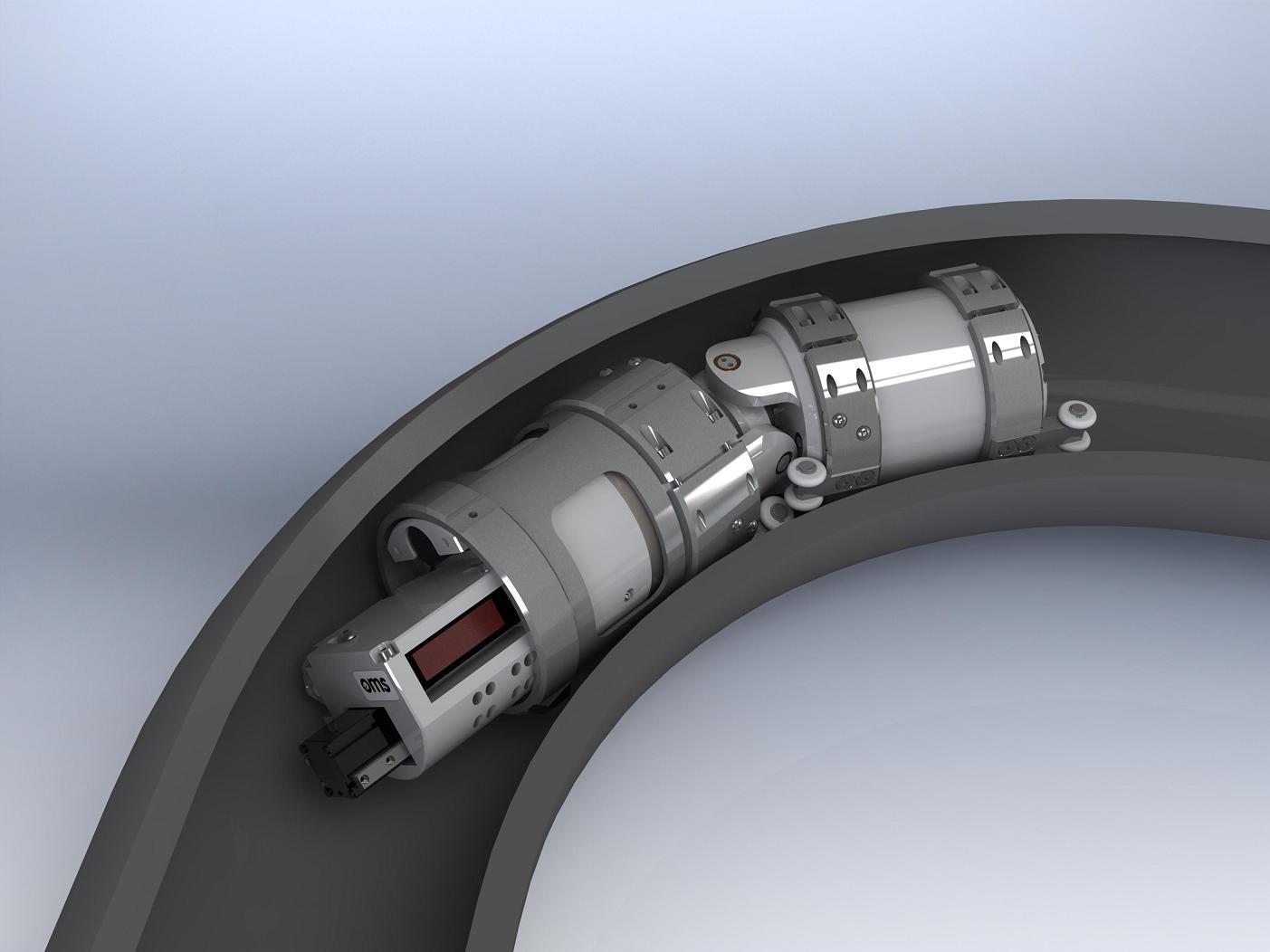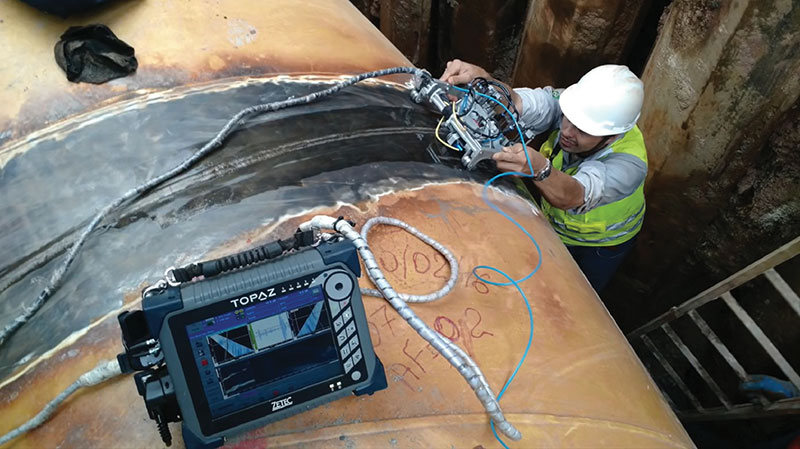Comprehensive Review of Pipeline Welding Assessment Treatments
Pipeline welding examination treatments play an important role in assuring that welded connections fulfill rigid industry criteria and specs. From meticulous pre-welding examinations to detailed post-weld assessments, a distinct evaluation process is necessary for preserving the architectural stability of pipelines.
Pre-welding Assessment Preparations
Before starting the welding procedure, complete pre-welding evaluation prep work are necessary to make certain the stability and top quality of the weld joint. These preparations entail a meticulous assessment of the materials to be welded, the welding tools, and the work atmosphere. Firstly, the materials have to be examined for any type of defects, pollutants, or incongruities that could jeopardize the weld. This consists of monitoring for proper product qualities, measurements, and surface area conditions. Pipeline Welding Inspection. Furthermore, the welding devices requires to be inspected to verify that it is in great functioning problem, adjusted correctly, and appropriate for the certain welding procedure. Any kind of concerns with the equipment ought to be dealt with quickly to stop issues in the weld. The job setting have to be reviewed for sanitation, correct air flow, and safety and security actions to make certain a helpful setup for the welding procedure. By carrying out detailed pre-welding inspection prep work, possible problems can be determined and fixed beforehand, causing trusted and high-grade weld joints.
Welding Treatment Credentials
Thorough pre-welding examination preparations lay the structure for the crucial procedure of Welding Procedure Credentials, guaranteeing the honesty and quality of the weld joint. Welding Treatment Qualification (WPQ) is a crucial step in the welding process that entails testing and accrediting welding treatments to guarantee they satisfy specific requirements and requirements. The WPQ procedure normally consists of welding treatment requirements growth, welding treatment credentials screening, and documentation of the outcomes.
During welding procedure specification advancement, crucial details such as the welding process, welding products, joint layout, and welding parameters are defined to produce a thorough procedure. Consequently, welding procedure credentials testing is performed to confirm the proposed procedure's integrity. This screening often involves welding test vouchers that undergo various mechanical and non-destructive tests to evaluate the weld's high quality and adherence to the defined criteria.
In-process Weld Examination
Throughout the welding procedure, in-process weld inspection plays an essential function in making sure the top quality and honesty of the weld joint - Pipeline Welding Inspection. This kind of examination entails checking the welding criteria, analyzing the weld grain development, and identifying any kind of possible issues or stoppages as they take place. By performing in-process weld assessments, welding operators can quickly deal with any type of issues that may emerge, therefore guaranteeing and preventing more issues that the last weld meets the called for requirements
Common techniques utilized for in-process weld inspection include visual evaluation, fluid penetrant testing, magnetic particle testing, ultrasonic testing, and radiographic testing. On the whole, in-process weld evaluation is essential for maintaining the high quality and reliability of bonded pipelines.
Non-destructive Screening (NDT)
Non-destructive Testing (NDT) is a critical method utilized in pipe welding inspection to assess the integrity of weld joints without triggering damage to the welded structure. By using different NDT techniques, assessors can assess the high quality of welds and determine any type of issues or discontinuities that might compromise the architectural strength of the pipeline. Common NDT techniques made use of in pipe welding inspection consist of Radiographic Testing (RT), Ultrasonic Testing (UT), Magnetic Fragment Checking (MPT), Fluid Penetrant Testing (LPT), and Visual Testing (VT)
RT involves the usage of X-rays or gamma rays to produce images of the internal framework of the weld, allowing assessors to detect defects such pop over to these guys as porosity, cracks, or incomplete combination. In addition, VT includes visual assessment of welds to determine any kind of visible blemishes.
Post-weld Evaluation and Paperwork

Paperwork of post-weld evaluation searchings for is vital for maintaining quality assurance records and making sure compliance with market criteria and guidelines. Detailed reports need to include details about the assessment methods utilized, the area and nature of any flaws found, and any type of rehabilitative actions taken - Pipeline Welding Inspection. Appropriate documents not only functions as a document of the weld's quality but likewise help in future maintenance and evaluation processes
Final Thought

Finally, pipeline welding assessment procedures play a vital role in making sure the quality and stability of welds. From pre-welding examinations to post-weld documentation, each step is crucial in maintaining the security and performance of pipes. By following well established treatments and conducting extensive examinations, potential issues look at here can be identified and dealt with before they bring about costly repair work or failures. Generally, adherence to correct have a peek at this site inspection protocols is essential to the success of pipeline welding jobs.
From thorough pre-welding examinations to thorough post-weld analyses, a distinct examination procedure is necessary for preserving the structural stability of pipelines. By conducting in-process weld inspections, welding drivers can without delay attend to any type of problems that may arise, therefore protecting against more defects and making certain that the last weld fulfills the needed specifications.
Usual techniques used for in-process weld inspection consist of visual inspection, fluid penetrant testing, magnetic fragment screening, ultrasonic testing, and radiographic screening.Non-destructive Testing (NDT) is a critical approach utilized in pipe welding assessment to assess the honesty of weld joints without triggering damages to the welded framework. Post-weld assessment involves different approaches to examine the welds for defects, consisting of visual examination, dye penetrant screening, magnetic particle screening, ultrasonic screening, and radiographic testing.